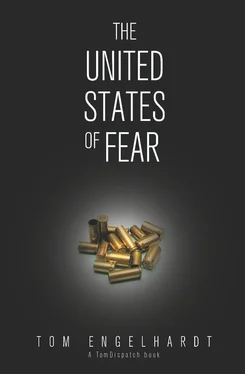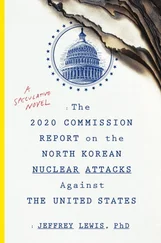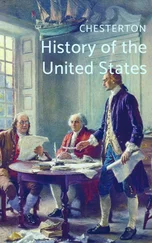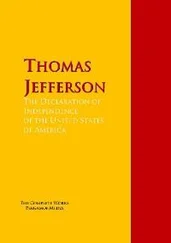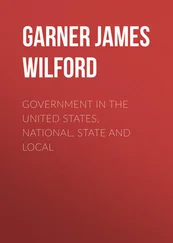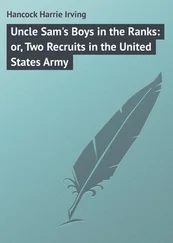Yes, Obama’s national security officials threw that term to the dogs back in 2009, and now pursue a no-name global strategy that’s meant not to remind you of the Bush era. Recently, the White House released an unclassified summary of its 2011 “National Strategy for Counterterrorism,” a nineteen-page document in prose only a giant bureaucracy with a desire to be impenetrable could produce. If it makes a feeble attempt to put a little rhetorical space between Obama-style counterterrorism and what the Bush administration was doing, it still manages to send one overwhelming message: George W. Bush, Dick Cheney, et al., are still striding amongst us, carrying big sticks and with that same crazed look in their eyes.
The Global War on Terror was the bastard spawn of the disorientation and soaring hubris of the days after the 9/11 attacks, which set afire the delusional geopolitical dreams of Bush, Cheney, their top national security officials, and their neocon supporters. And here’s the saddest thing: the Bush administration’s most extreme ideas when it comes to GWOT are now the humdrum norm of Obama administration policies—and hardly anyone thinks it’s worth a comment.
A History Lesson from Hell
It’s easy to forget just how quickly GWOT was upon us or how strange it really was. On the night of September 11, 2001, addressing the nation, President Bush first spoke of winning “the war against terrorism.” Nine days later, in an address to a joint session of Congress, the phrase “war on terror” was already being expanded. “Our war on terror,” Bush said, “begins with al-Qaeda, but it does not end there. It will not end until every terrorist group of global reach has been found, stopped, and defeated.”
In those early days, there were already clues aplenty as to which way the wind was gusting in Washington. Top administration officials immediately made it plain that a single yardstick was to measure planetary behavior from then on: Were you “with us or against us”? From the Gulf of Guinea to Central Asia, that question would reveal everything worth knowing, and terror would be its measure.
As the New York Times reported on September 14, Bush’s top officials had “cast aside diplomatic niceties” and were giving Arab countries and “the nations of the world a stark choice: stand with us against terrorism or face the certain prospect of death and destruction.” According to Pakistani dictator Pervez Musharraf, Deputy Secretary of State Richard Armitage took that message directly to his country’s intelligence director: either ally with Washington in the fight against al-Qaeda, or prepare to be bombed “back to the Stone Age,” as Armitage reportedly put it.
Global War on Terror? They weren’t exaggerating. These were people shocked by what had happened to iconic buildings in the “homeland” and overawed by what they imagined to be the all-conquering power of the U.S. military. In their fever dreams, they thought that this was their moment and the apocalyptic winds of history were at their backs. And they weren’t hiding where they wanted it to blow them, either. That was why they tried to come up with names to replace GWOT—World War IV (the third was the Cold War) and the Long War being two of them—that would be even blunter about their desire to plunge us into a situation from which none of us would emerge in our lifetimes. But to the extent anything stuck, GWOT did.
As journalist Ron Suskind reported in his book The One Percent Doctrine , in a “Presidential Finding” on September 17, 2011, only six days after the World Trade Center towers went down, Bush granted the CIA an unprecedented license to wage war globally. By then, the CIA had presented him with a plan whose name was worthy of a sci-fi film: the “Worldwide Attack Matrix.” According to Suskind, it already “detailed operations [to come] against terrorists in 80 countries.”
In other words, with less than two hundred countries on the planet, the president had declared open season on nearly half of them. Of course, the Pentagon wasn’t about to be left out while the CIA was given the run of the globe. Soon enough, Secretary of Defense Rumsfeld began building up an enormous CIA-style secret army of elite special operations forces within the military. By the end of the Bush years, these had reportedly been deployed in—don’t be surprised—sixty countries. In the Obama era, that number expanded to seventy-five—mighty close to the eighty in the Worldwide Attack Matrix.
And one more thing, there was a new weapon in the world, the perfect weapon to make mincemeat of all boundaries and a mockery of national sovereignty and international law (with little obvious danger to us): the pilotless drone. Surveillance drones already in existence were quickly armed with missiles and bombs and, in November 2002, one of these was sent out on the first CIA robot assassination mission—to Yemen, where six al-Qaeda suspects in a vehicle were obliterated without a by-your-leave to anyone.
That CIA strike launched the drone wars, which are now a perfectly humdrum part of our American world of war. In June 2011, the Obama administration leaked news that it was intensifying its military-run war against al-Qaeda in Yemen by bringing the CIA into the action. The agency is now to build a base for its drone air wing somewhere in the Middle East to hunt Yemeni terrorists (and assumedly those elsewhere in the region as well). Yemen functionally has no government to cooperate with, but in pure Bushian fashion, who cares?
At the same time, unnamed American officials leaked the news that, for the first time, a U.S. military drone had conducted a strike against al-Shabab militants in Somalia, with the implication that this was a “war” that would also be intensifying. Meanwhile, curious reports were emerging from Pakistan, where the CIA has been conducting an escalating drone war since 2004 (strikes viewed “negatively” by 97 percent of Pakistanis, according to a 2011 Pew poll). Top Pakistani officials were threatening to shut down the agency’s drone operations at Shamsi air base in Baluchistan. Shamsi is the biggest of the three borrowed Pakistani bases from which the CIA secretly launches its drones. The Obama administration responded bluntly. White House counterterrorism chief John O. Brennan insisted that, whatever happened, the United States would continue to “deliver precise and overwhelming force against al-Qaida” in the Pakistani tribal areas.
As Spencer Ackerman of Wired ’s Danger Room blog summed things up, “The harsh truth is that the Pakistanis can’t stop the drone war on their soil. But they can shift its launching points over the Afghan border. And the United States is already working on a backup plan for a long-term drone war, all without the Pakistanis’ help.” In other words, permission from a beleaguered local ally might be nice, but it isn’t a conceptual necessity.
If Bush’s crew is long gone, the world they willed us is alive and well. After all, there are reasonable odds that, on the day you read this, somewhere in the free-fire zone of the Greater Middle East, a drone “piloted” from an air base in the western United States or perhaps a secret “suburban facility” near Langley, Virginia, will act as judge, jury, and executioner somewhere in the “arc of instability.” It will take out a terrorist suspect or suspects, or a set of civilians mistaken for terrorists, or a “target” someone in Washington didn’t like, or that one of our allies-cum-intelligence-assets had it in for, or perhaps a mix of all of the above. We can’t be sure how many countries’ American drones, military or CIA, are patrolling, but in at least six of them—Afghanistan, Pakistan, Yemen, Somalia, Libya, and Iraq—they have launched strikes in recent years that have killed more “suspects” than ever died in the 9/11 attacks.
Читать дальше
